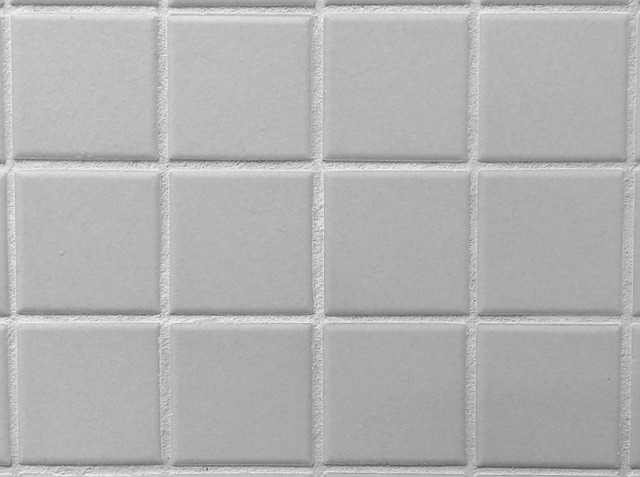Tile and grout, though durable, degrade over time due to water exposure, environmental conditions, foot traffic, and lack of maintenance, leading to issues like fading, chipping, discoloration, and mold growth. Regular cleaning and sealing prevent problems, but severe damage may require professional restoration techniques. This article provides a step-by-step guide on how to restore old tile and grout, including gathering tools, cleaning, repairing damaged areas, applying sealant, rearranging tiles for an affordable update, and maintaining restored surfaces through regular cleaning and prompt damage addressing. Using these cost-effective tips, you can effectively revive your tiled spaces while extending their lifespan.
Tired of faded tile and grout in your home? Learn how to restore old tile and grout affordably with our comprehensive guide. We’ll walk you through understanding the aging process, gathering the right tools and materials, and tackling common issues like cracks, chips, and discoloration. From cleaning and re-grouting to sealing and creative revamp ideas, we’ve got you covered. Discover cost-effective tips for maintaining your restored tiles, making your space look new again without breaking the bank.
Understanding Tile and Grout Aging: Causes and Common Issues

Tile and grout, despite their durability, are subject to aging and degradation over time due to various factors. Understanding these causes is essential when considering how to restore old tile and grout. Factors like water exposure, environmental conditions, foot traffic, and lack of proper maintenance can lead to common issues such as fading, chipping, discoloration, and the growth of mold or mildew.
These problems often manifest as stains, gaps between tiles, peeling grout, and overall loss of aesthetic appeal. Regular cleaning and sealing can prevent many of these issues, but some damage may require professional restoration techniques. Knowing when to seek help and understanding basic restoration methods can ensure your tiled spaces remain vibrant and functional for years to come.
Tools and Materials Required for Restoration

Restoring old tile and grout can be a cost-effective way to revive your space. Before starting, gather the necessary tools and materials. You’ll need a wire brush or scrub sponge, baking soda or grout cleaner, a wet/dry vacuum, a putty knife for applying sealer or mortar, and a microfiber cloth for polishing. Additionally, protective gear like gloves and goggles is essential to prevent skin irritation or eye contact with chemicals.
For the cleaning process, prepare a solution of warm water and baking soda, or opt for a grout cleaner suitable for your tile type. A wire brush will help remove stubborn dirt and grime from the pores of the tiles and grout lines. After scrubbing, use a wet/dry vacuum to thoroughly clean away debris and moisture, ensuring no residue is left behind. This step is crucial in preparing the surface for sealing and maintaining the restored appearance over time.
Step-by-Step Guide to Cleaning and Re-grouting

Restoring old tile and grout can bring new life to your space, making it look as good as new. Here’s a step-by-step guide on how to clean and re-grout your tiles effectively. Start by sweeping or vacuuming the floor to remove any loose debris. Next, mix a solution of mild detergent and warm water in a bucket, ensuring it’s not too aggressive as you don’t want to damage the tile surface. Using an old toothbrush or grout brush, gently scrub the grout lines, going back and forth to dislodge any built-up grime and calcium deposits. Rinse thoroughly with a wet cloth or sponge to eliminate any soap residue.
After cleaning, inspect the grout for any damaged or missing sections. If needed, repair using a grout patch kit. Once the area is prepared, apply a new layer of grout, pressing it firmly into the gaps between tiles. Use a grout float to smoothen and level the surface. Let it dry according to the manufacturer’s instructions before sealing with a water-resistant sealer for protection against stains and moisture.
Repairing Damaged Tiles: Cracks, Chips, and Discoloration

Damaged tiles, whether from cracks, chips, or discoloration, can significantly detract from a space’s aesthetic appeal and functionality. Luckily, repairing old tile and grout doesn’t have to be a costly endeavor. With the right tools and some DIY spirit, it’s entirely possible to restore your tiled surfaces to their former glory.
The first step in how to restore old tile and grout involves assessing the extent of the damage. For minor cracks or chips, a simple repair kit can be used to fill and smooth over the affected areas. For more severe cases of discoloration or pitting, a more intensive approach may be needed. This could involve removing the damaged grout, cleaning the tile surface thoroughly, and then regrouting the area with fresh material, ensuring an even finish that complements the existing tiles.
Sealing and Protecting Restored Surfaces

After successfully restoring old tile and grout, sealing and protecting the surfaces is a crucial step in maintaining their beauty and longevity. This involves applying a high-quality sealant to both the tiles and grout lines. Sealants create a protective barrier, preventing stains, moisture, and dirt from penetrating the porous material. Regular cleaning and maintenance will be easier as the sealant repels contaminants, ensuring your restored surfaces stay looking fresh for an extended period.
Choose a sealant designed specifically for tile and grout to ensure optimal protection. Apply it evenly across all exposed areas using a brush or sponge, following the manufacturer’s instructions for drying times. This simple process can significantly extend the life of your restoration work, allowing you to enjoy your revitalized space without constant worry about damage or discoloration.
Creative Ways to Revamp Old Tile Patterns

Revamping old tile patterns is an affordable way to breathe new life into your space, offering creative solutions for how to restore old tile and grout. Start by assessing the existing layout—you might find that a simple rearrangement of tiles can create a whole new look. Consider using different colors or textures of tile to highlight specific areas, or even add decorative elements like mosaics or inlay work to give your floors a unique, artisanal touch.
Don’t overlook the potential of grout. Updating the grout color can instantly transform the overall aesthetic of your tiled surfaces. Newer grout options are also more durable and easier to maintain than traditional grout, making it a simple and cost-effective way to refresh your space without breaking the bank.
Cost-Effective Tips for Maintaining Your Restored Tiles

Restoring old tile and grout can transform your space, bringing new life to tired surfaces. To keep your restored tiles looking their best, implement these cost-effective tips. Regular cleaning with a mild detergent and soft brush prevents dirt and grime buildup, which can cause discolouration over time. Avoid harsh chemicals that may damage the tile or grout finish.
Additionally, sealing your grout after restoration is crucial. Grout sealers create a protective barrier against moisture, dirt, and stains. This simple step goes a long way in maintaining the longevity of your restored tiles. Keep an eye out for any signs of damage or discolouration and address them promptly to prevent further issues.
